“Do Better Than Us”: Three Years of USC Viterbi Ph.D.s Receive Their Hoods
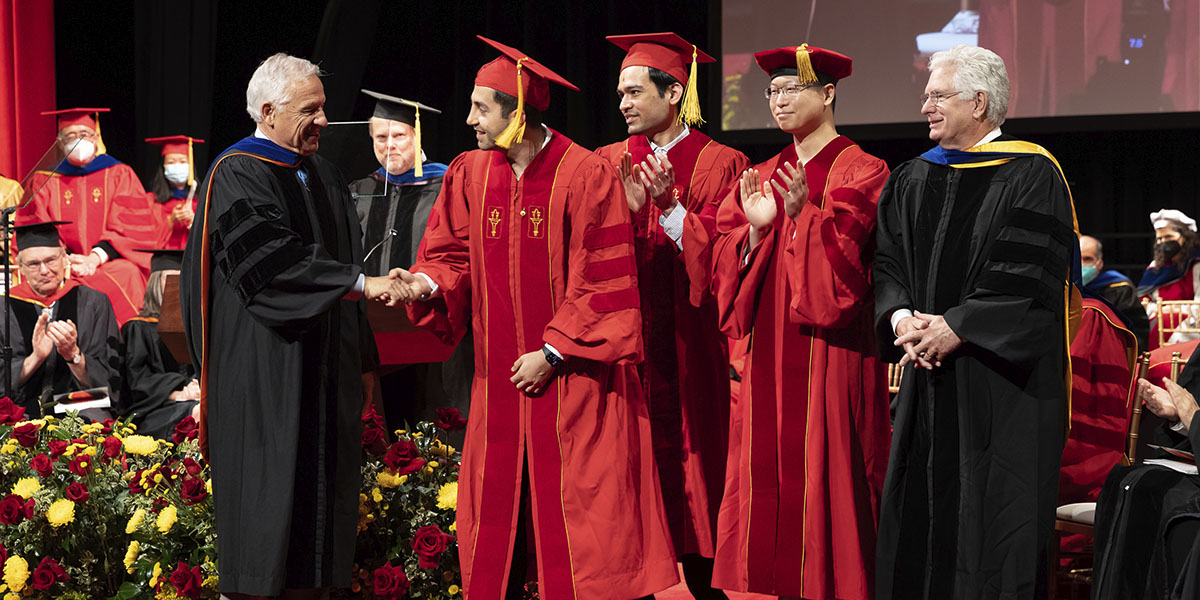
Ali Marjaninejad remembers watching the video, like a proud father, of his robot learning to walk with no prior knowledge.
Yang Xu thought about abandoning his Ph.D. journey many times. But his religious faith and the support of his parents finally overwhelmed any negative emotions.
Dhruv Patel remembers his first major research breakthrough, working all through the night and into the morning. For him, it was a validation of “perseverance, patience, and optimism.”
These three newly hooded Ph.D.s are among the 215 new Ph.D. graduates of the USC Viterbi School of Engineering. They’re also this year’s finalists for the best USC Viterbi Ph.D. dissertation award for 2022 – the William F. Ballhaus, Jr. Prize for Excellence in Graduate Engineering Research.
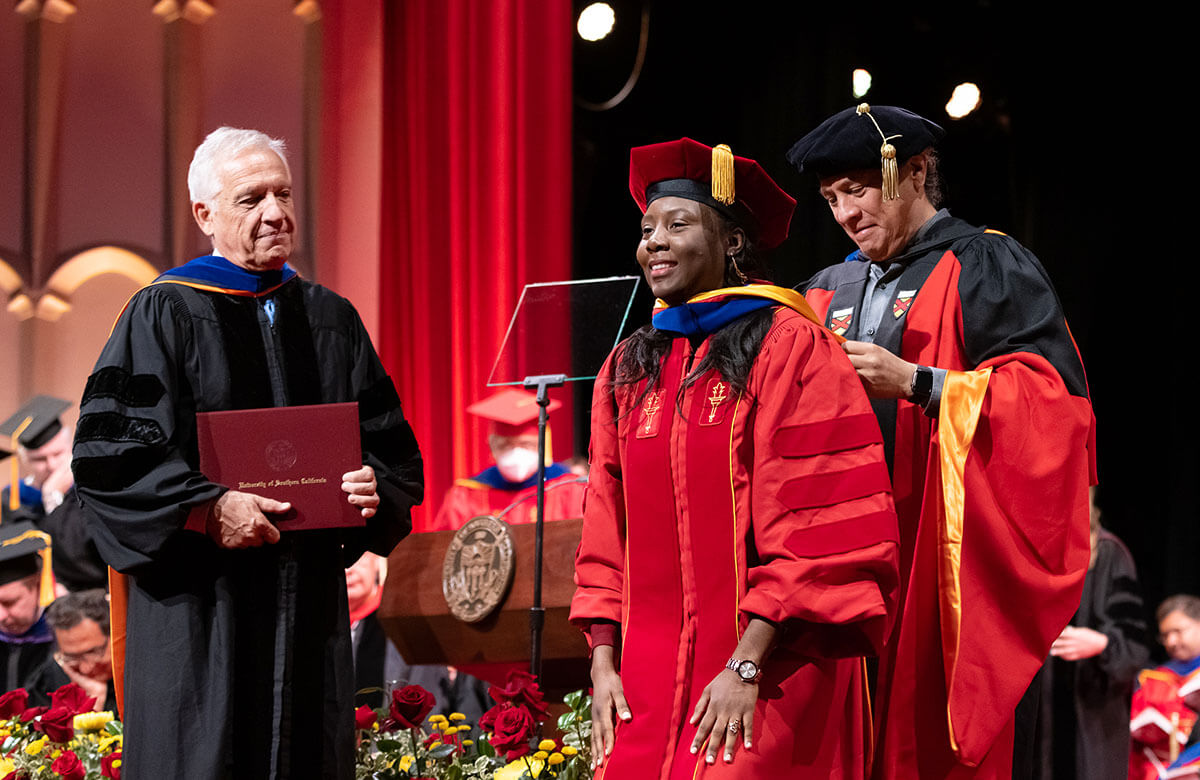
Jasmine Berry receives her Ph.D. hooding from Professor Francisco Valero-Cuevas, her advisor, as Dean Yannis Yortsos looks on. © 2022 Sarah M Golonka | smg-photography
On Wednesday, May 11, 2022, in a centuries old tradition, the newly minted Ph.D.s donned their cardinal and gold hoods. Going back to the 13th century, the hooded robes were required for warmth in unheated medieval libraries. Yesterday, the warmth was effusive in USC’s Bovard Auditorium as around 850 family, friends and well-wishers saluted the graduates with waves of applause.
It was the first Ph.D. hooding for USC Viterbi students since 2019. Today’s event, the culmination of a half decade or longer journey, honored USC Viterbi Ph.D.s from 2020, 2021 and 2022.
During the ceremony, Yannis Yortsos, dean of the USC Viterbi School of Engineering, paid tribute to Professor George Ban-Weiss, who passed away last fall at age 40. Echoing the words of Joseph Ko, one of Ban-Weiss’ Ph.D. students, Yortsos noted that the late professor always wanted his students “to ‘do better than him’ in the future.”
“This, to me,” said Yortsos, “is the hope and the promise of today. Today, you will be hooded by our faculty…a group of highly decorated awardees, innovators and pioneers. And yet…we say to you: ‘Do better than us.’ Not just as technically proficient engineers, but as human beings.”
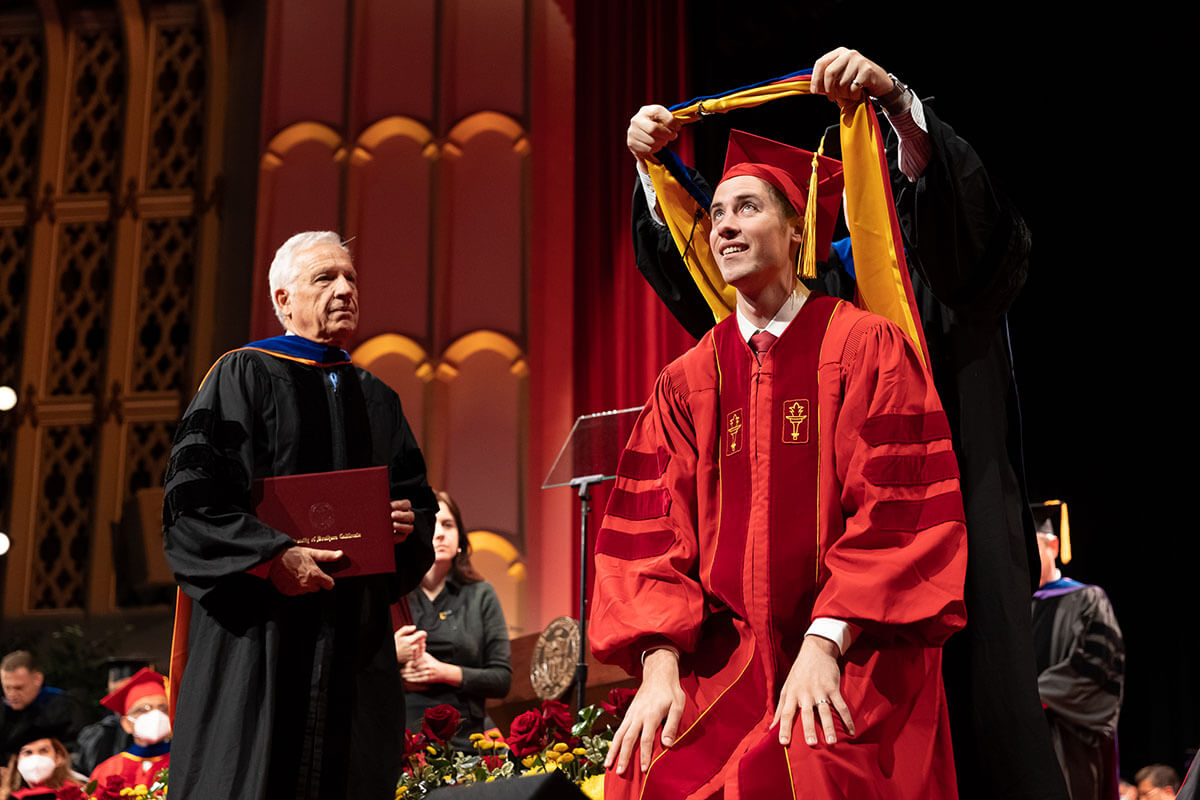
USC Viterbi PhD Hooding Ceremony © 2022 Sarah M Golonka | smg-photography
As an example of that, Marjaninejad, who was announced as the 2022 Ballhaus Prize winner, has already shown a promising research trajectory.
Marjaninejad, who received his Ph.D. in 2021 in biomedical engineering, has already started as a senior data scientist at Ceribell Inc., “where we use AI to process human brain signals (EEG) and detect potential seizure patterns to alarm the healthcare team, which can lead to reduced time to detect and eventually to provide better monitoring and treatment for the patients.”
His Ph.D. research, which may one day be vital to bio-inspired, personalized prosthetics such as robotic limbs and hands that “can learn from, adapt to, and build into its movement patterns using the everyday habits of its users.”
“Our robots,” said Marjaninejad, “are able to learn any tasks that is physically possible for them without being fed the ‘how to’ by an engineer and only by trying different strategies and see how well it performed each time.”
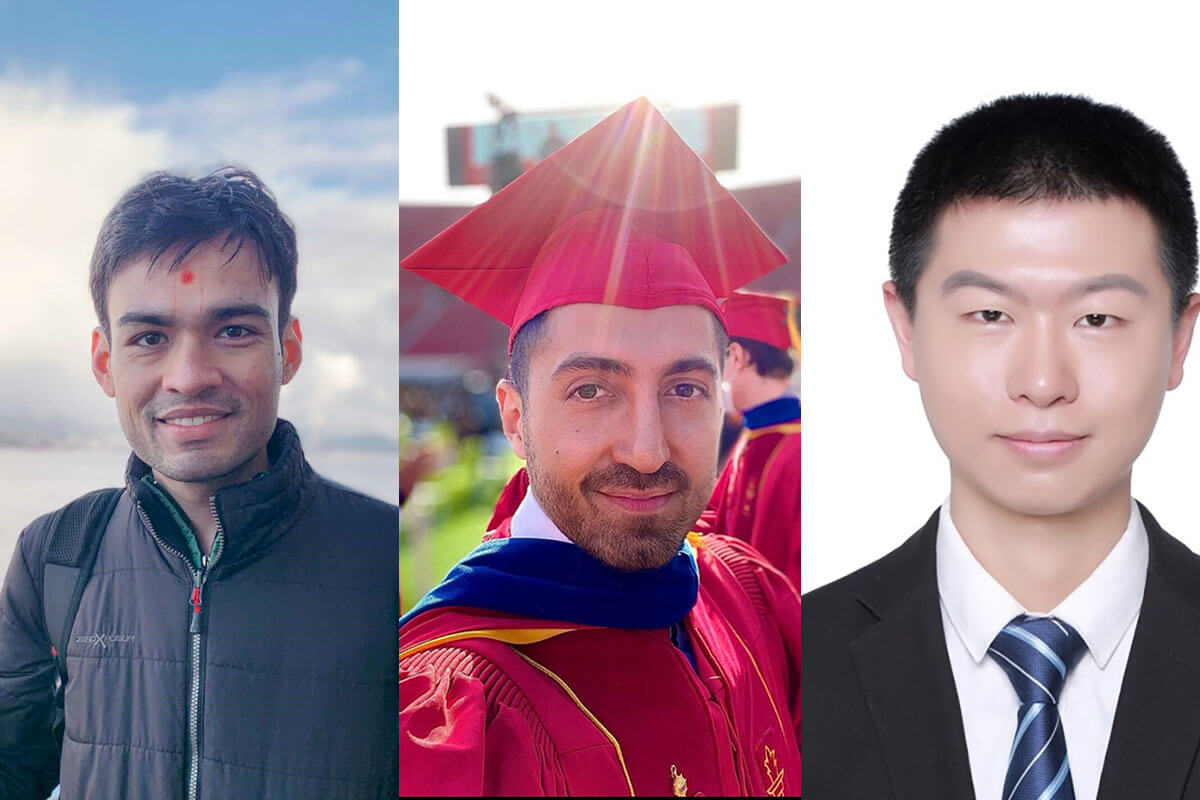
This year’s nominees for best USC Viterbi Ph.D. dissertation award (the William Ballhaus Prize): Dhruv Patel, Ali Marjaninejad (winner) and Yang Xu. Submitted Photos.
Xu, meanwhile, currently a post-doctoral researcher at USC, developed a new additive manufacturing technology that might benefit biomedical researchers, especially drug developers and patients.
“Microfluidic chips are commonly used tools in the biomedical area,” said Xu. “They are crucial to drug development, diagnostic testing and medical research in areas such as cancer, diabetes, and now COVID-19 and have proven to be effective in lowering the cost of drug R&D.”
“The additive manufacturing technology I developed benefits the fabrication of microfluidic devices… Similar to the Olympic motto – ‘faster, higher, stronger,’ my research on additive manufacturing technologies aims at faster fabrication speed, higher resolution, and stronger part performance…I hope our manufacturing approach can boost the application of microfluidic devices and thus bring affordable healthcare to billions of people worldwide.”
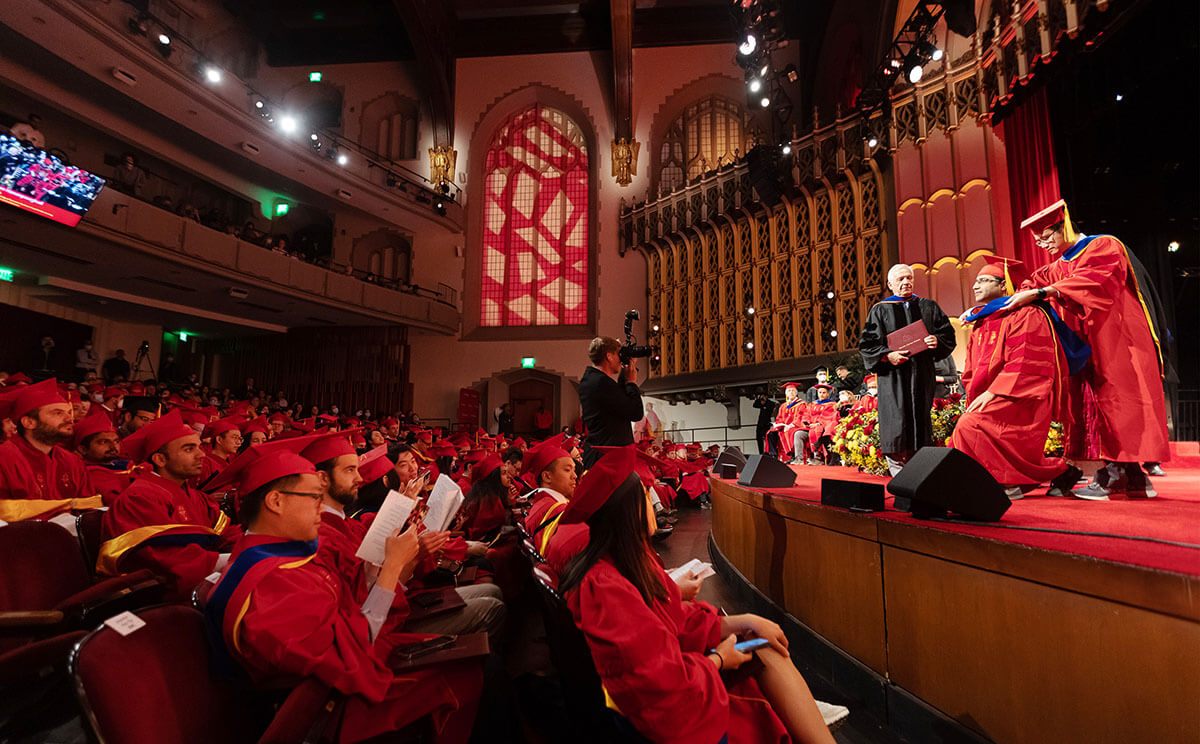
USC Viterbi PhD Hooding Ceremony © 2022 Sarah M Golonka | smg-photography
Dhruv, who is currently working as a Timoshenko Distinguished Postdoctoral Fellow at Stanford University, is focused on solving so-called “inverse problems” that could pay huge dividends for doctors and radiologists, geologists, climate scientists, astrophysicists and even everyday people using smartphones.
“Imagine,” said Dhruv, “you’re cheering your kid during his baseball game from the sidelines and you decide to take a picture of him while he is hitting the ball to capture the moment. You clicked a perfect picture only to realize that the fence separating you two is completely overlaid on that picture and is killing the whole vibe of that moment. The thing you’re interested in here is a perfect picture of your kid, but what you have as an observation — as an output from the camera sensor — is a picture of your kid with an overlaid fence, and the process of obtaining the clean picture from this (noisy) image with an overlaid fence is called the inverse problem.”
Dhruv marries recent advances in machine learning with traditional physics-based modeling to tackle problems like climate change and non-invasive medical diagnosis.
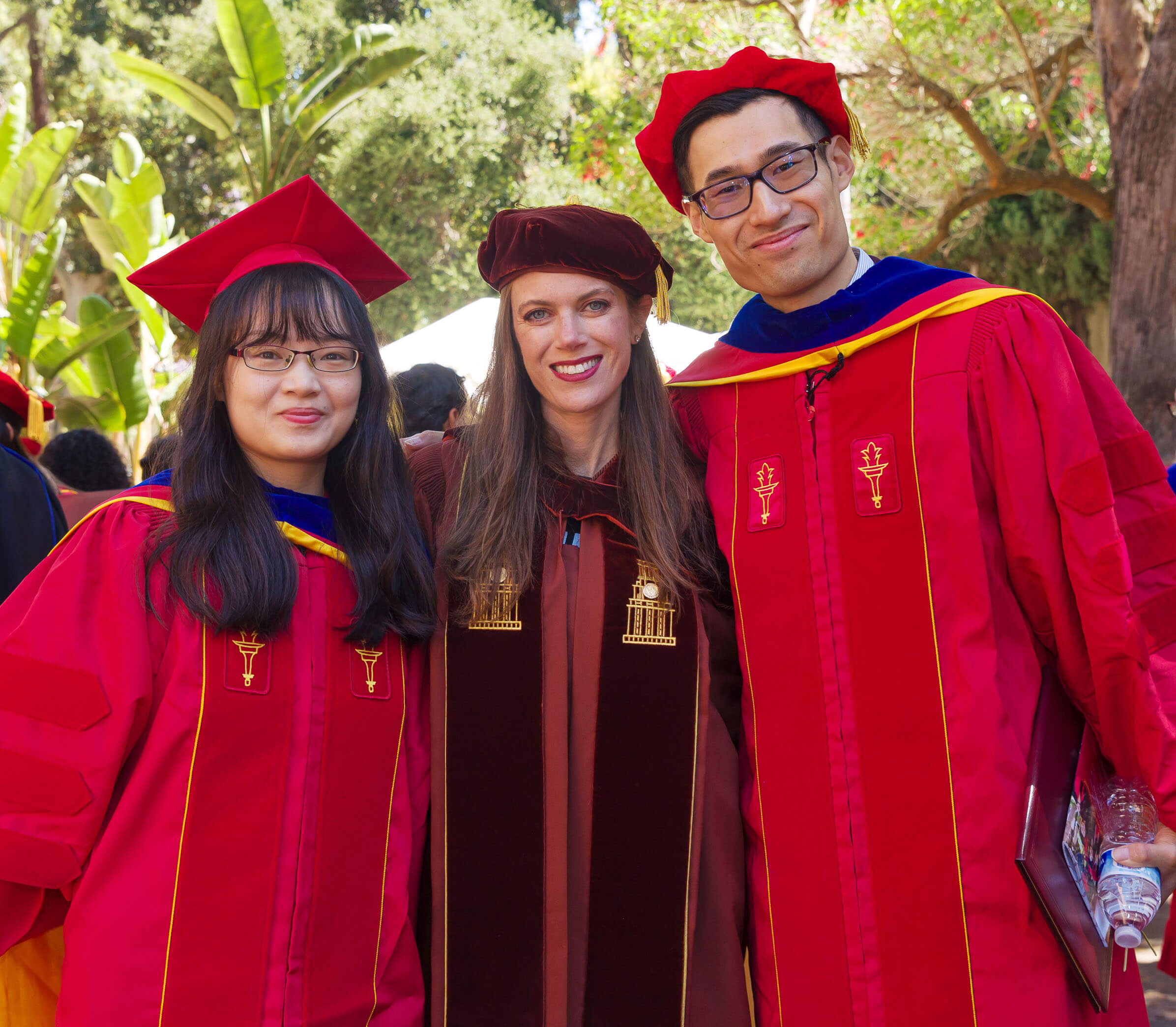
Professor Kelly Sanders, flanked by newly hooded Ph.D.s, Yun Li and Mo Chen, at the post hooding and awards reception in USC’s Associates Park. © 2022 Sarah M Golonka | smg-photography
The late Professor Ban-Weiss was visible in the form of his two former Ph.D. students, Yun Li and Mo Chen, both who received their hoods from Kelly Sanders, the Dr. Teh Fu Yen Early Career Chair and USC Viterbi associate professor of civil and environmental engineering — a close collaborator with Ban-Weiss. Chen was co-advised by Ban-Weiss and Sanders, while Li, who received the USC Ph.D. Achievement Award for 2022, was advised solely by Ban-Weiss before his death.
“George’s legacy continues to live on through the incredible work of Yun Li and Mo Chen, who represent some of USC’s best and brightest,” said Sanders. “Every day they are leveraging their science to make California’s air cleaner and safer to breathe for the generations to come.”
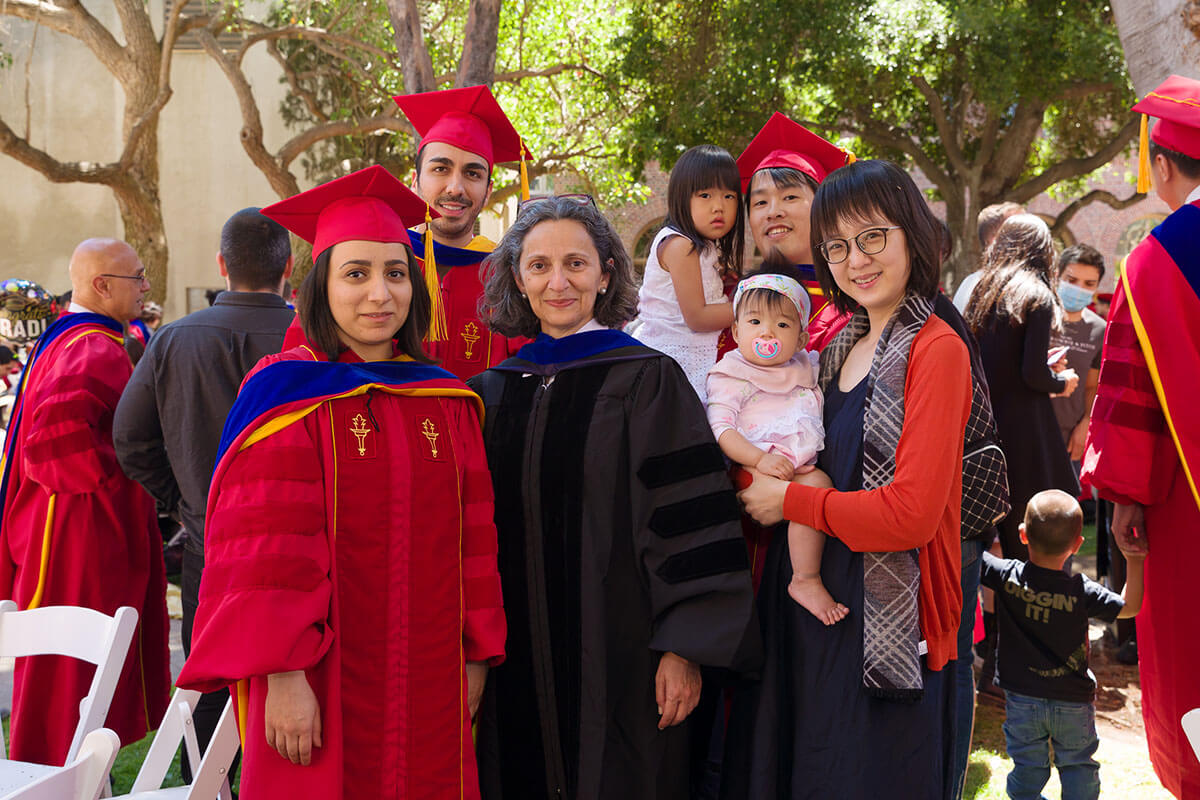
Professor Mahta Moghaddam (center) with her newly hooded Ph.D. students: (from left to right) Negar Golestani, now a post-doc at Stanford; Amir Azemati, now with Aptiv; Richard Chen, currently at JPL; alongside Chen’s family: his wife, Ying, and daughters, MayMay and RayRay. © 2022 Sarah M Golonka | smg-photography
Published on May 12th, 2022
Last updated on May 12th, 2022